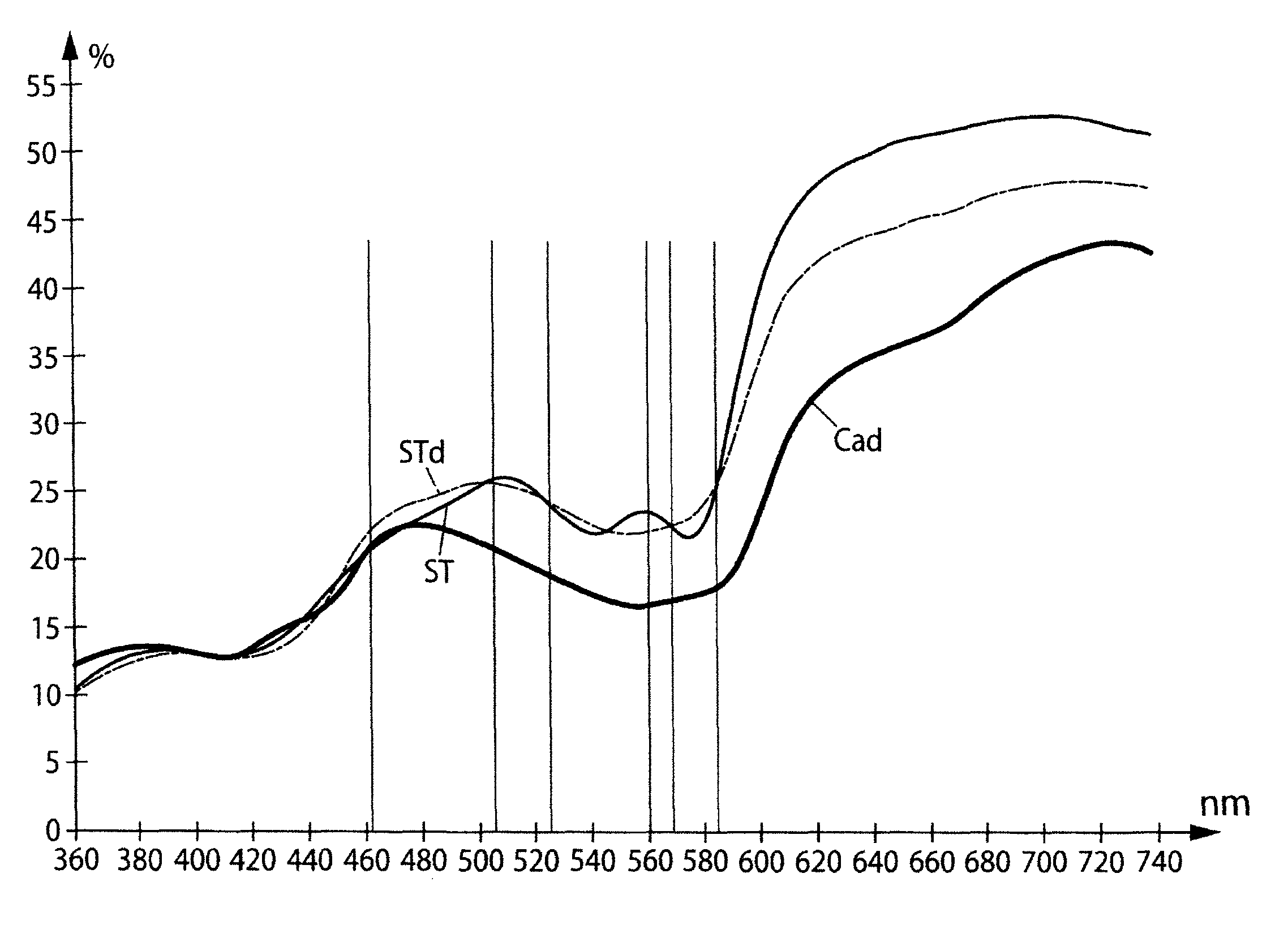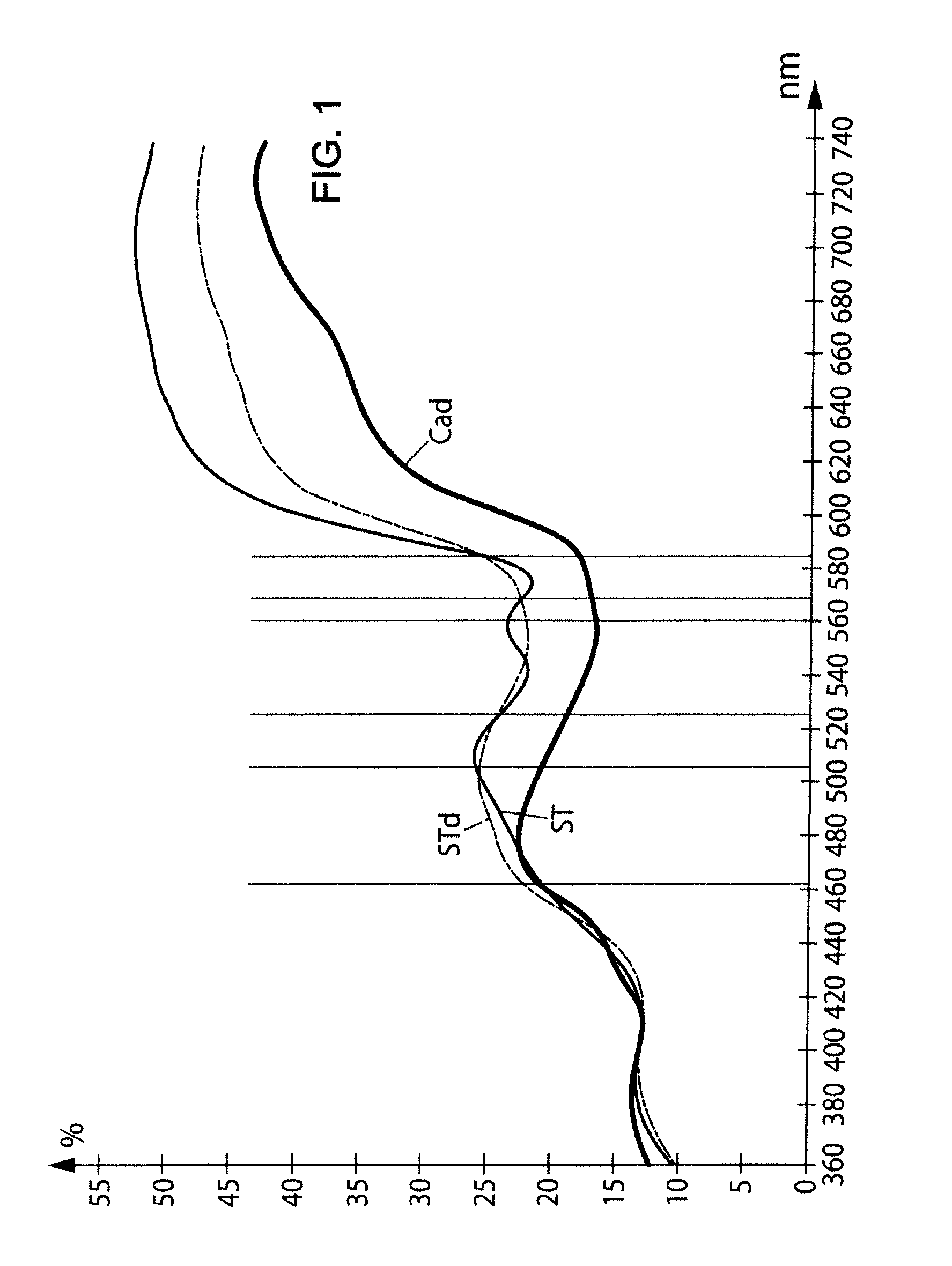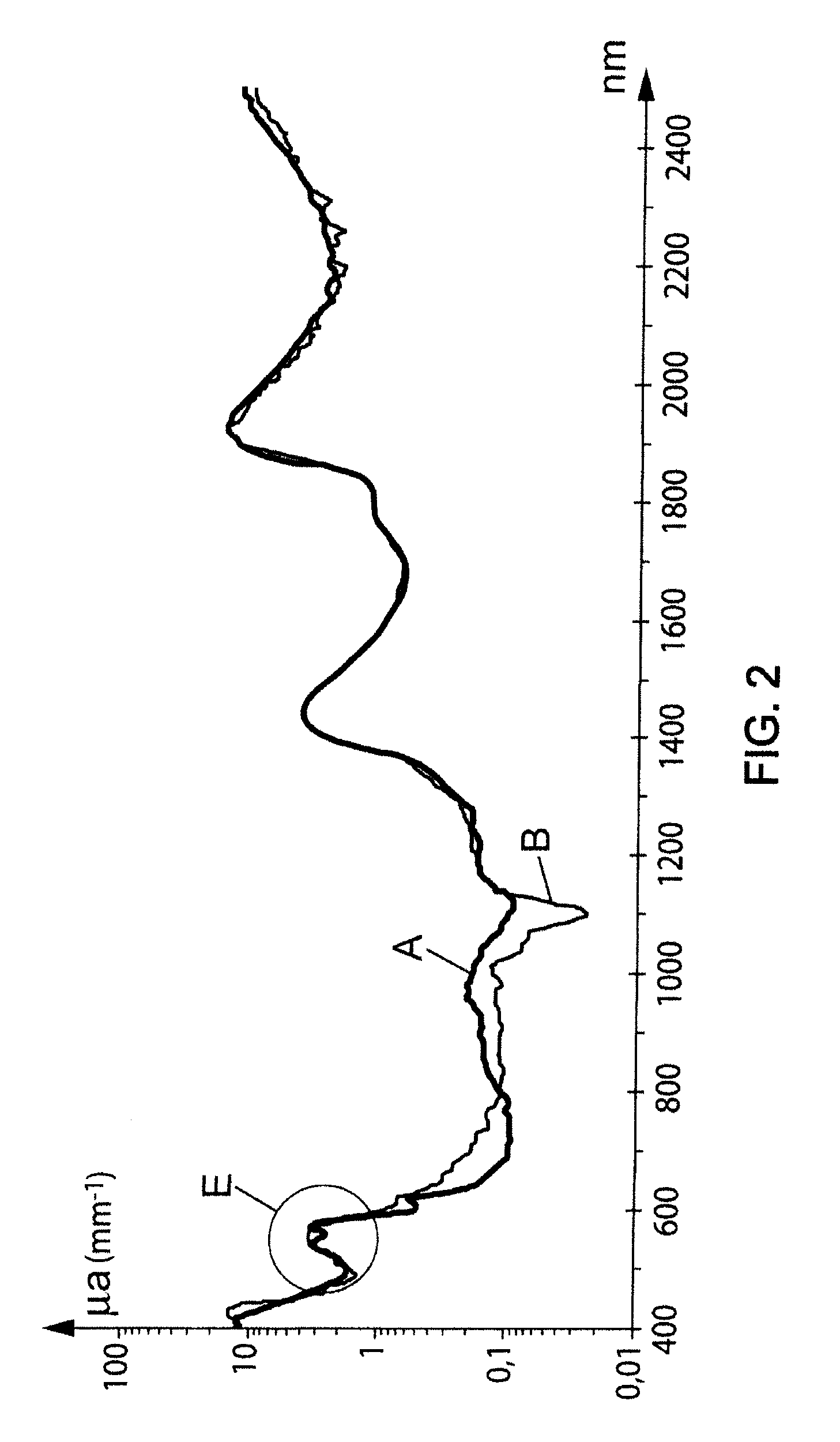Method of validating a biometric capture, notably a body print
a biometric and capture method technology, applied in the field of biometric capture, can solve the problems of false fingers, body prints, and inability to exclude the fact that fraud can take place, and achieve the effect of simple and quick implementation
- Summary
- Abstract
- Description
- Claims
- Application Information
AI Technical Summary
Benefits of technology
Problems solved by technology
Method used
Image
Examples
Embodiment Construction
[0027]In FIG. 1, the curve “ST” represents, according to the wavelength of an incident electromagnetic radiation in a range of wavelengths between 360 nm and 740 nm, the reflection rate (as a percentage of the incident power) of an electromagnetic radiation for a standard living tissue.
[0028]In FIG. 1, the curve “STd” represents, according to the wavelength of an incident electromagnetic radiation in a range of wavelengths between 360 nm and 740 nm, the reflection rate (as a percentage of the incident power) of an electromagnetic radiation for a living tissue after application of a tourniquet for one minute.
[0029]In FIG. 1, the curve “Cad” represents, according to the wavelength of an incident electromagnetic radiation in a range of wavelengths between 360 nm and 740 nm, the reflection rate (as a percentage of the incident power) of an electromagnetic radiation for a cadavre.
[0030]In FIG. 2, the curve A plotted as a thick line represents, according to the wavelength of an incident e...
PUM
 Login to View More
Login to View More Abstract
Description
Claims
Application Information
 Login to View More
Login to View More - R&D
- Intellectual Property
- Life Sciences
- Materials
- Tech Scout
- Unparalleled Data Quality
- Higher Quality Content
- 60% Fewer Hallucinations
Browse by: Latest US Patents, China's latest patents, Technical Efficacy Thesaurus, Application Domain, Technology Topic, Popular Technical Reports.
© 2025 PatSnap. All rights reserved.Legal|Privacy policy|Modern Slavery Act Transparency Statement|Sitemap|About US| Contact US: help@patsnap.com



